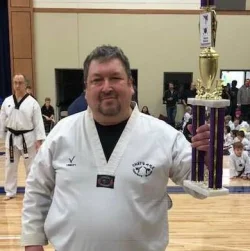mrt2
Brown Belt
That is how one of our assistant instructors does it. That is how I remember doing it back when I did Tang Soo Do in the 80s. The only problem is, there are some child black belts who do attend general classes, and while you would expect a child black belt to hold his own against an adult colored belt, in practice, it doesn't always apply when the child is less than 5 feet tall and weighs less than 90 lbs, and the adult is close to 6' tall and weighs over 200 lbs. So in that case, they have to re adjust the lines to fix obvious mismatches.How do they pair you guys up? Where I train, we make two lines facing each other. At the end of the round, everyone moves over one place; effectively, everyone works with everyone else. A better way to describe it: if there’s 10 people in class, the highest 5 line up facing the rest of the class. Then the remaining 5 pair up with them in rank order. After a round, everyone (both lines) moves one spot to the left, and we continue. Once everyone’s back to their original spot, everyone’s paired up with someone they haven’t worked with yet (when applicable).
Kids and adults have separate classes, so that’s a non-issue for us. But when we’ve got someone who just started adult classes (about 13 years old), they’re in the same line as everyone else.
Our head instructor just matches up by gender and size.

